Note: The definitions of terms marked in (*) are in the glossary at the end of this article.
We all have remarkable cells that reside in almost all tissues that can provide a resource to provide dental benefits and allow for regenerative capabilities to the body.
If we can harness those cells and preserve them, they can continue to deliver an advantage, as other non-preserved cells will not be able to as we age. It allows us to provide dental benefits, treat diseases, and make aging more pleasant.

In dentistry, we can access stem cells (*) of the tooth pulp. Acorn Biolabs in Toronto has now figured out a non-invasive way to preserve stem cells utilizing your hair follicles. The age at which we preserve our stem cells matters. As we age, the amount and quality of the cells diminish rapidly. Stem cells can self-renew, but they are exposed to erosion of telomeres (*) and DNA mutations as we age. The exposure our cells have to DNA mutations doubles with every decade. We depend on stem cells so much, and when they fail, it’s only a matter of time before our bodies start to go downhill. Disease and dental issues, such as tooth loss, usually occur later in life when our cells are at their worst. Banking, dental pulp cells, or hair follicles allow patients access to their best cells for autologous cell therapy – to deliver the benefit they may need. After banking the cells, they are a resource for that patient for the rest of their life.

Stem cell treatments are primarily in the experimental phase, but there is progress. We are starting to see the first indications of the true potential of the cells which reside within us. In addition, medicine is noticing the stark limitations of older stem cells. Older stem cells yield vastly diminished effects with bone marrow treatments, especially over 65. The amount of adult stem cells in our bodies peaks in our 20s and then begins a prolonged arithmetic decline, which continues until sometime in our 60s when the decline accelerates. The reduction depends on the person’s genetics, health level, and life choices.
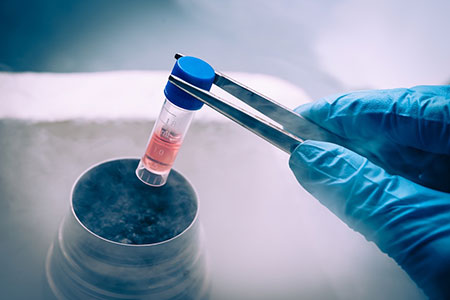
Dr. Drew Taylor of Acorn BioLabs compares the many different stem cell types to a mountain. We can compare the top of a mountain to where cells can become anything. At the base of the mountain are cells that have become what they are supposed to be in our body – for example – a tooth dentin cell, skin cell, liver cell, or kidney cell. The stem cell can be thought of “rolling down” one side of a mountain to a point where it becomes what its purpose is. At different points on the mountain, we see different types of stem cells, which have a defined purpose. The cells can still become multiple types of cells. However, only the cell at the top of the mountain can become anything. The ones on the side of the mountain can only become other things on that side.
Further to analogize, Dr. Taylor says that most of the stem cell therapies used today target those cells which are a little bit up the mountain – but not all the way up. We can access these cells, which are pools in tissue, such as our dental pulp or fat tissue (adipocytes). These are part of the mesenchymal linage (*) closely associated with bone and cartilage. These cell types can benefit those areas – such as potentially regenerating the dental jawbone.
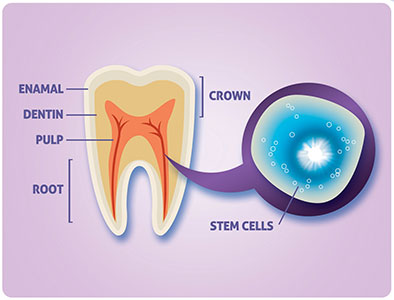
Obtaining dental stem cells is viable if you are already removing a tooth for dental reasons. Many young adults get their wisdom teeth removed, and the pulp of these teeth is an excellent source of stem cells. Acorn Biolabs in Toronto has decided to focus on the adult stem cells in our hair follicles. A large follicular reservoir is easily accessible because they are diverse and plentiful. To harvest hair cells, you must pluck the follicles from the back of the head non-invasively. In comparison, you would have to have surgery to access the adipocyte stem cells or drill into the iliac crest to harvest bone marrow.
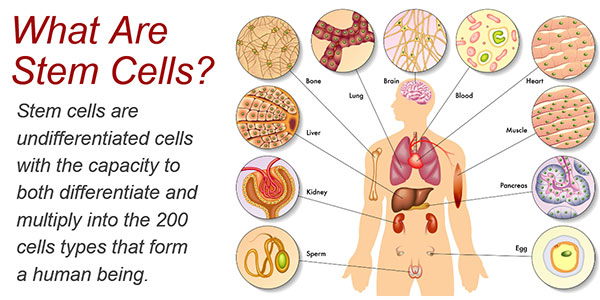
Recently, the finding that researchers can reprogram stem cells has led to tremendous excitement. For example, Dr. Shinya Yamanaka and his group in Japan made a pluripotent stem cell out of a skin cell – and won a Nobel prize for this work. In other words, they could take a skin cell and push it back to the top of the mountain. So, one day, we could take a dental pulp stem call or hair cell and make it any other type of cell, such as a pancreas cell, on demand. Essentially this is the pioneering work in reprogramming cells.
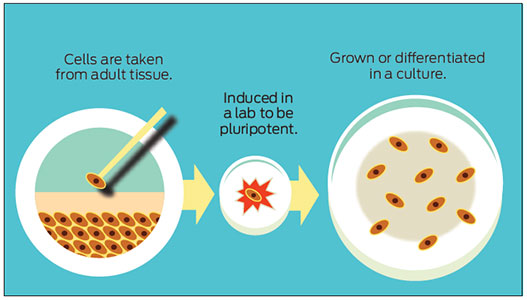
It is currently difficult to develop therapies for stem cells in North America. For a good reason, Health Canada and the FDA have restrictive guidelines on conducting research — to protect patients. However, approved progress is being made in skincare regeneration and treating diabetic foot ulcers.
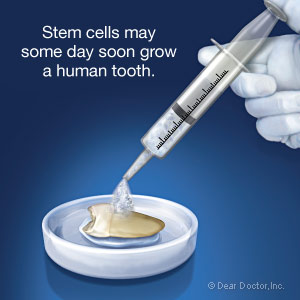
Right here in Toronto, Acorn BioLabs is currently working on a few different areas. One of the near-term goals is to use the banked cells to recreate the things we need for healthy skin and to grow hair. For example, the cells responsible for wound healing reside in hair follicles and migrate out of follicles to help wounds heal. In other words, the follicles have pools of cells perfect for skin rejuvenation or hair restoration. The building blocks for healthy skin and hair — collagen, elastin, and hyaluronic acid—can be created on demand. Clinicians can create a solution similar to how we extract blood and create platelet-rich plasma (*). However, the solution contains cells that keep our skin and hair healthy — not just a filtrate of general growth factors but specific ones to the hair and skin. Similarly, researchers are investigating how to grow new teeth and regenerate dental tissues using dental-specific cells.
Long-term Acorn BioLab projects include taking follicles and banking them long-term by cryogenics. The plan is to multiply and reprogram them, then turn them toward therapies a person may need. So far, their partners at Mt. Sinai hospital took hair follicles, induced them into pluripotent stem cell lines, and then pushed them into precursor pancreas cells. They are also looking into pushing them into beta islet cells to help combat diabetes. These ambitious long-term studies will only come to fruition in a few years. There is also discussion about turning the hair follicles into neurons or blood-brain barrier cells.
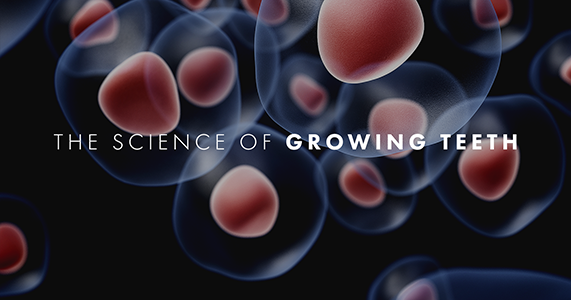
Stem cell therapy has risks, which is why researchers must take caution. For example, hypothetically, there would be a real problem if dental pulp cells were put into the liver and generated tooth enamel. These cells can become anything, and if they do not form the proper tissue, they risk causing a teratoma tumor. Being reset gives us a blank slate, but we need to make sure it makes the right cell type we need.
Currently, there are advantages and drawbacks of stem cells from different tissues. The hair follicle is like a mini organelle with multiple germ layers. They have keratinocytes and fibroblasts, which are very good at expanding. Many are akin to the ectodermal layer and also contain mesenchymal cells. Umbilical cord stem cells have a lot of potentials and have been used to treat childhood leukemia. Unfortunately, we cannot expand those cells well — so there are issues with having enough cells. Bone marrow and adipose stem cells are an option.
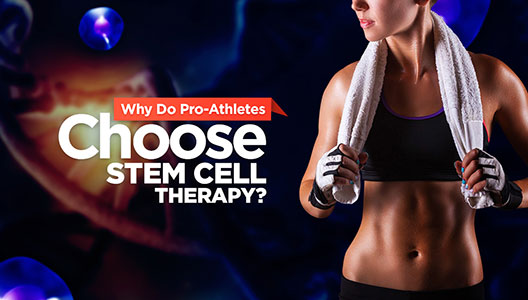
One cross-tissue use of stem cells sought after is the use of fat cells for skin rejuvenation. Although fat cells are not skin cells, they still are adult stem cells. There are generic growth factors present in all our adult stem cells. In the same way, like platelet-rich plasma therapies, we can concentrate on growth factors and provide benefits. Adipocytes have been used in sports injury and for hair growth. Unfortunately, it could be a better match. If you’re trying to heal skin, you can take some of the good elements that fat produces, which are generalist beneficiary molecules, but you need to take the ones for your skin that are precisely for your skin for ideal results. There are specific growth factors (*)on top of the ones we see in adipocytes. Specific growth factors are not present in PRP or adipocytes, which are only present in the skin or higher volumes in the skin— their purpose is to regenerate skin. You could say the same about therapies targeting dental tissues. Once we can safely and consistently generate pluripotent cells, we will enter a new phase of regenerative dentistry and medicine.
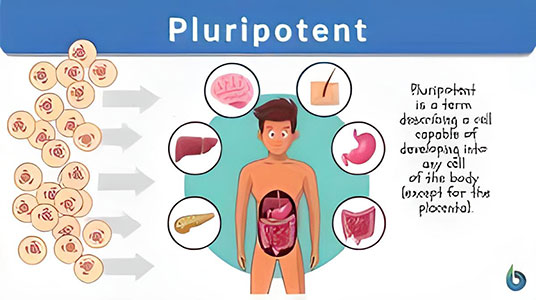
One promising area of research is using mesenchymal stem cells for joint or back pain treatment. They reside in a few body areas- including teeth, hair follicles, and bone marrow. These cells can be powerful for treating musculoskeletal conditions because mesenchymal cells ultimately become bone, cartilage, or fat.
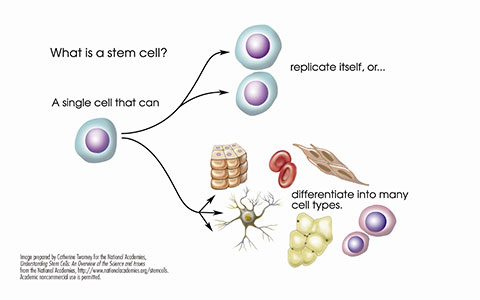
In summary, dental pulp tissue, bone marrow, hair follicles, and adipocytes are all viable for stem cell applications. Using bone marrow and adipocytes can help treat joint pain, back pain, and aesthetic reasons. However, the uses may not all be FDA-approved at this point.
Dental tissues and hair follicles are currently only in clinical trials, but we can preserve them.
The take-home message is the older we get; the less viable and plentiful our stem cells will be. Therefore, you may want to consider saving them now— whether from dental cells contained in teeth or hair follicles. In essence, you are taking out a biological insurance policy for yourself. If later on in life, you may need to access your preferred cells which represent a young and the best physical version of yourself.
Glossary of Terms:
- Stem cells: Cells from which all other cells with specialized functions are generated.
- Telomeres: nucleoprotein structures that cap the end of each chromosome arm and function to maintain genome stability.
- Mesenchymal stem cells (MSCs): are multipotent stem cells found in the bone marrow and dental pulp that are important for making and repairing skeletal tissues, such as cartilage, bone, and the fat found in the bone marrow.
- Platelet-rich plasma (PRP) injections: a treatment that uses a patient’s own blood cells to accelerate healing in a specific area.
- Growth factors: a substance required for the stimulation of growth in living cells.
Reference:
Dr. Drew Taylor | The Past, Present, and Future of Stem Cells: The Monk and the Hedonist, June 2022. https://www.youtube.com/watch?v=cQZftkjEitw
Acorn BioLab Website: 2022: https://www.acorn.me
- St. Lawrence Dentistry Looks Forward To St. Patrick’s Day! - March 12, 2025
- Understanding Dental X-Rays and Radiation: What You Should Know - January 13, 2025
- Happy New Year from St. Lawrence Dentistry! - December 30, 2024










